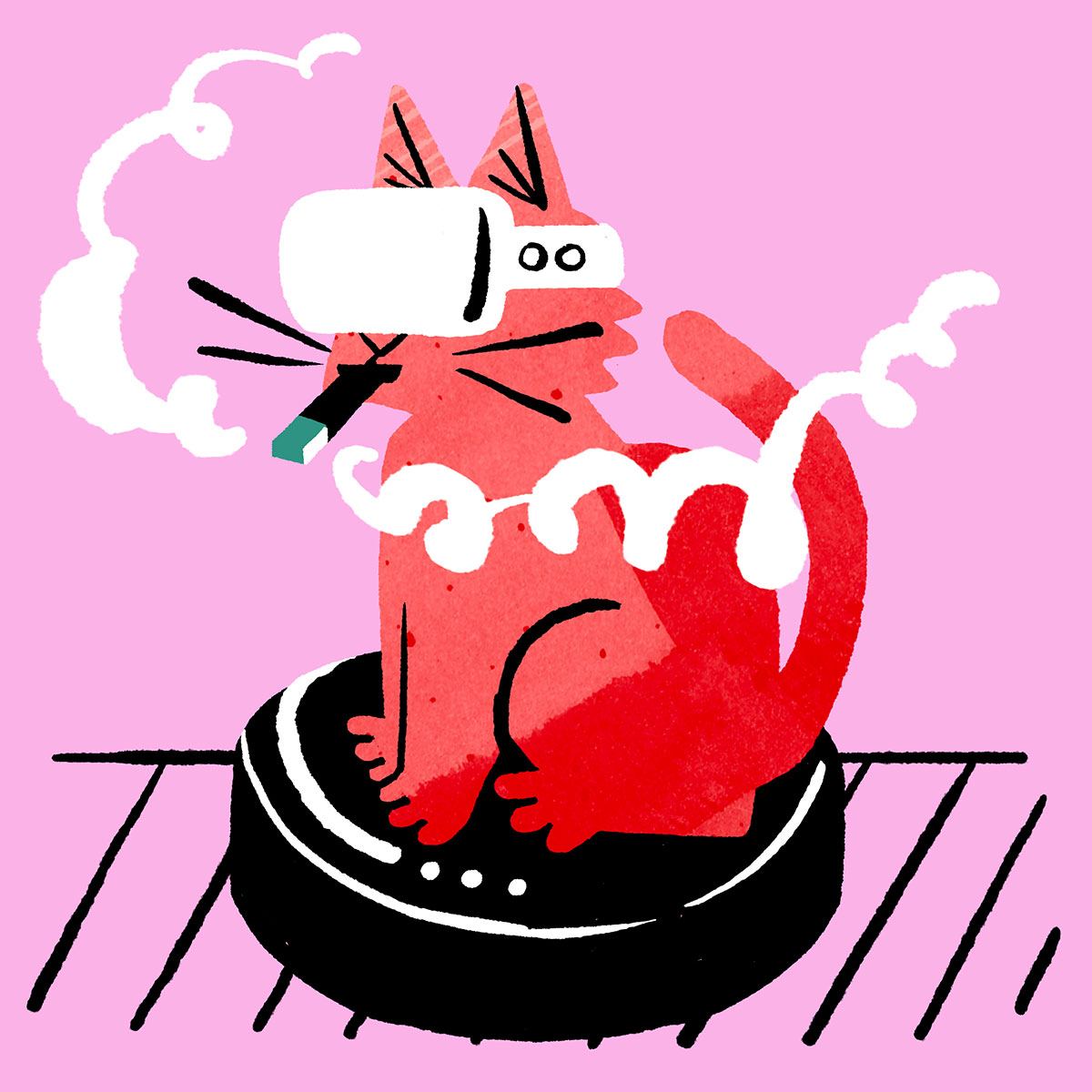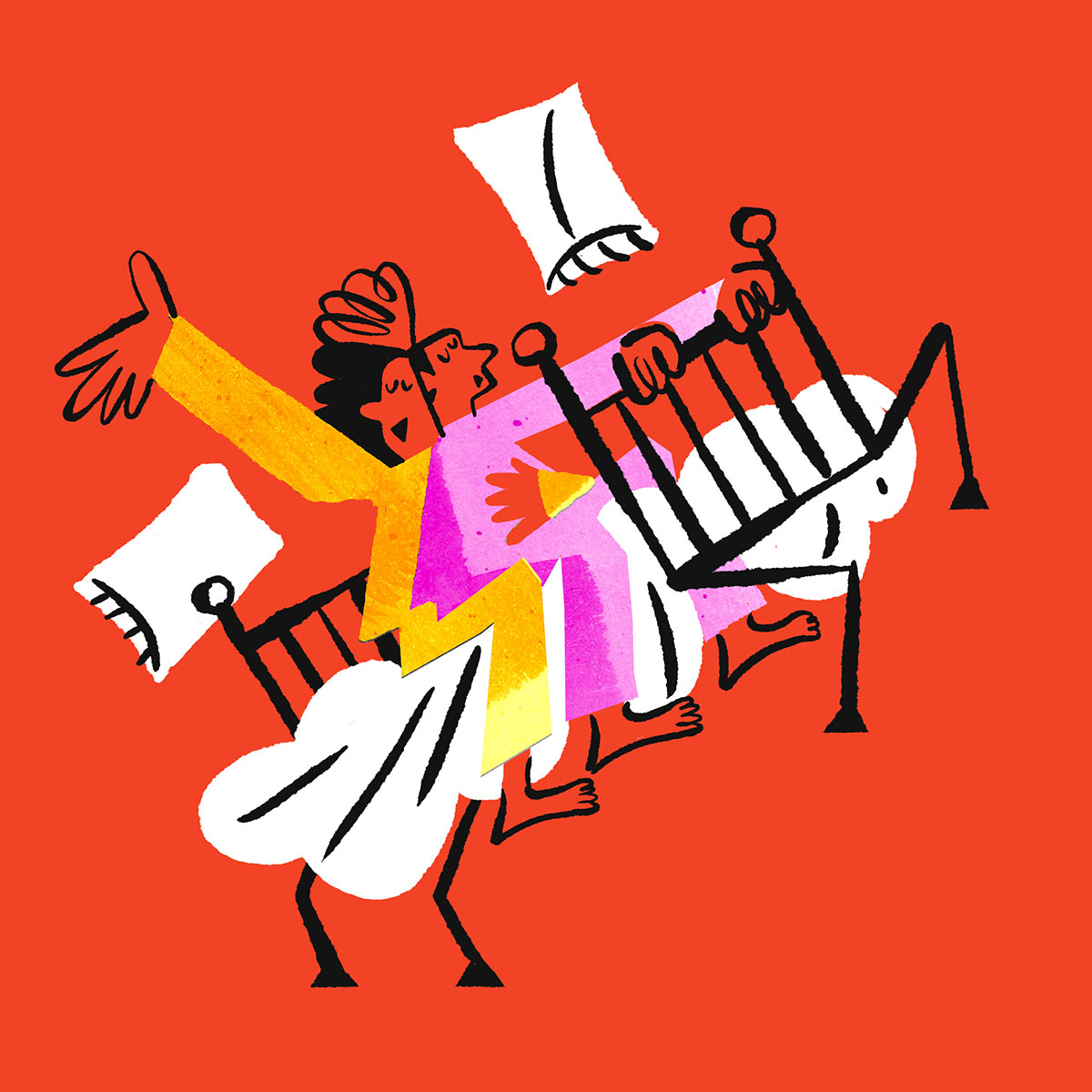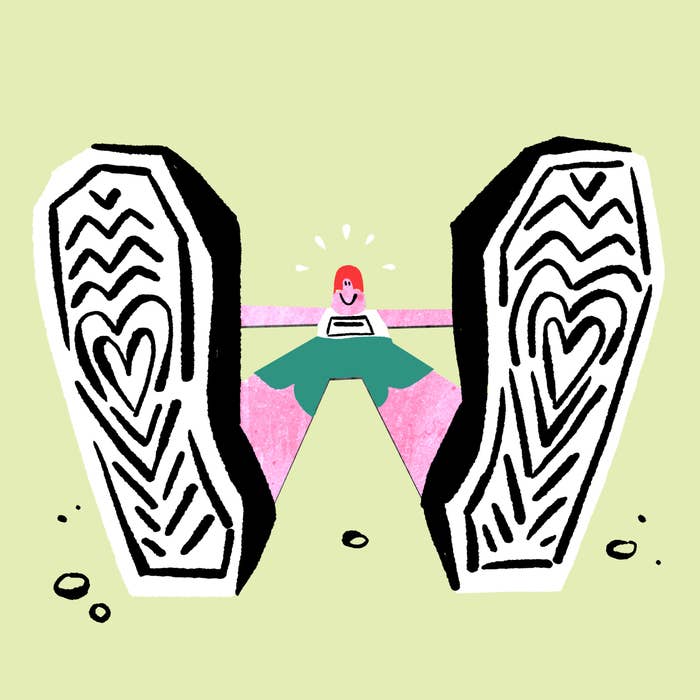
BuzzFeed may collect a share of sales or other compensation from Things We Love links if you decide to shop from them. Some items were already owned by our staffers, and others were sent to us for review, but nothing made the cut unless it was actually loved. We hope you love them too. Also, all prices were accurate and items in stock at the time of publication.
The thing I realized about training for my first marathon this year, as someone who has not been particularly athletic, is that it is an all-encompassing experience.
Every day I woke up dreaming of running. Every week was planned around my Saturday long runs and my Tuesday speed sessions. No matter the conversation topic I would inevitably turn it to running. (Oh, you just had a baby and are exhausted and struggling with a new postpartum body? Incredible, because marathon training is also very exhausting and my body is changing daily.)
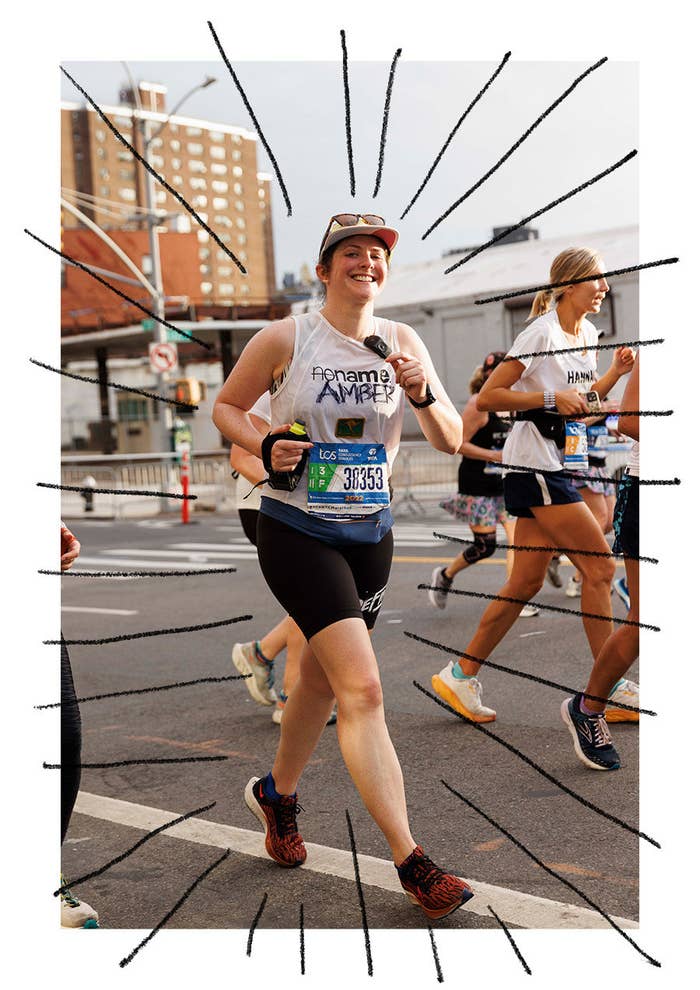
After years of occasional running, this year I began to call myself a runner, and I consider myself an advanced beginner. In 2022, I’ve run two half-marathon races, two 10K races, and a bunch of 4-mile races, all before running the New York City marathon on Nov. 6.
Marathon training meant acquiring an incredible amount of knowledge (thinking of food as protein and carbs, improving both my aerobic and anaerobic systems, figuring out my ideal marathon pace, etc.) and also getting a bunch of new stuff.
Running may seem like a cheap hobby — just a pair of shoes! — but this year showed me otherwise. I needed the right equipment, even though in the final weeks of marathon training it seemed that I just needed something to focus my nerves on.
Previously I would run in a baggy, old cotton T-shirt and a regular hat, with no snacks to help me along the way. As my training began, it became clear that I needed specific running gear. And not just in a retail therapy sense: I found that better shoes helped with pain, warm layers helped in winter, and energy gels made me feel better during long runs.
Getting the right stuff made a huge difference, and here are all the things that made training for my first marathon easier.

Join a run club
The first and most important step was finding and joining a run club. Run crews exist all over the world — most major cities have a bunch — just google “run club” or “run crew” plus your city, follow them on social media, and head along. Some are focused on speed and some on community, while others will run to a donut shop or are aimed at LGBTQ runners.
Figure out what you’re interested in and head to a session to find your running family. Trust me, none of your regular family or friends will want to hear about running as much as you want to talk about it, so running-specific friends are really important. Although this isn’t something you can buy (in fact, most are free!), being part of a run club was, for me, the most crucial part of completing my first marathon.

Leggings, a long-sleeve top, jacket, and more
Training multiple times a week — most marathon programs involve at least three to four runs per week, plus cross-training — means constantly needing workout clothes. I was very lucky to join the inaugural 16-week No Name marathon training program, sponsored by Lululemon, because my run club was involved in it (see, run clubs pay off). This program involved training sessions three times a week (Tuesday speed workouts, Thursday workshops on topics such as nutrition and psychology, and Saturday long runs) and meant we were gifted Lululemon apparel. However, I’m only recommending things I used and adored.
Living in New York City means owning a wide range of clothing for all seasons, and the general rule is that you should dress for running conditions approximately 15–20 degrees higher than the actual temperature.
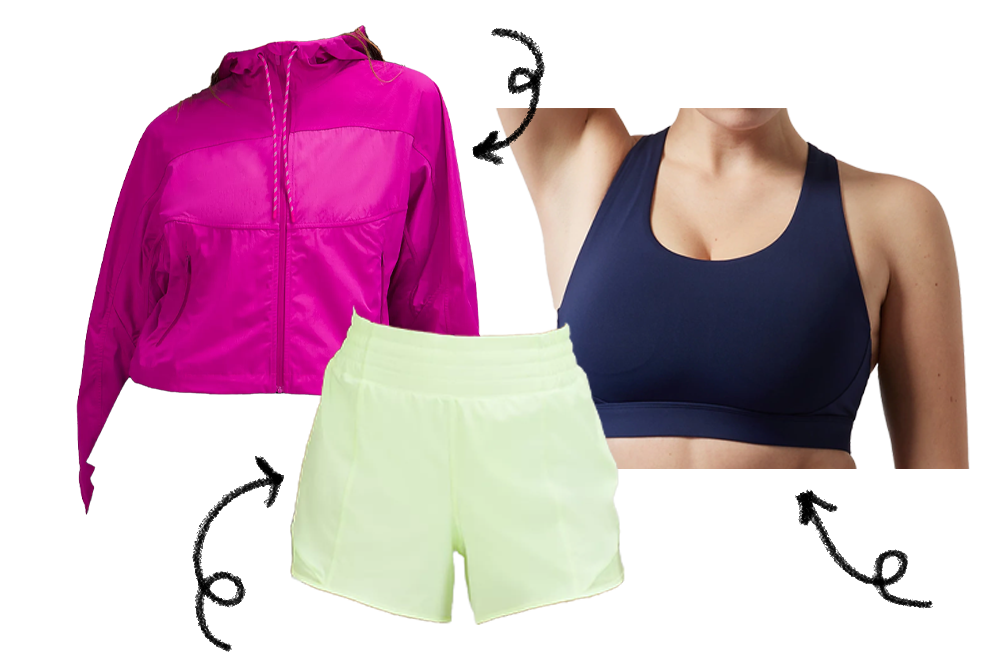
As always, the key is layers. I started training for the Brooklyn Half Marathon over the winter, and that meant cold-weather leggings, long-sleeve tops, a jacket, and face-warming accessories. The best long-sleeve winter running tops have thumb holes, which help keep your hand warm. I ended up with a selection of water-resistant (not waterproof) jackets that were sort of suitable for running even if not explicitly designed for it, in part because they were easier to justify the expense as I’d wear them elsewhere. If it was a light rainy day they were great; if there was heavy rain they were useless, but at least they were breathable.
When summer arrived, I was desperate for light and cool clothing (no cotton!). I ended up going to both Nordstrom Rack and TJ Maxx to grab whatever cheap running shorts, tanks, and sports bras were available. Looking back, I probably would have been better off sticking with higher-quality gear. But it helped me realize what I preferred: longer biker-style shorts (rather than short and loose track ones), mesh singlets for nighttime, T-shirts that covered my shoulders for sunny days, and bras with few straps.
You should run many, many times in your race-day gear so you can learn what feels most comfortable — and it may not be what you think. One fancy bra I really liked always started to chafe when I got past 8 miles.
The Athleta Ultimate Bra, which I’d bought on sale for around $25, never rubbed once. The Lululemon Wunder Train 8-inch Short was my ideal running short because they required zero adjustments; I’d wash them before my weekly long run. I honestly never found an ideal singlet or T-shirt and just ran in an ever-changing selection of them, usually ones I’d gotten for free from races or my run club.

Running belt, hats, and other accessories
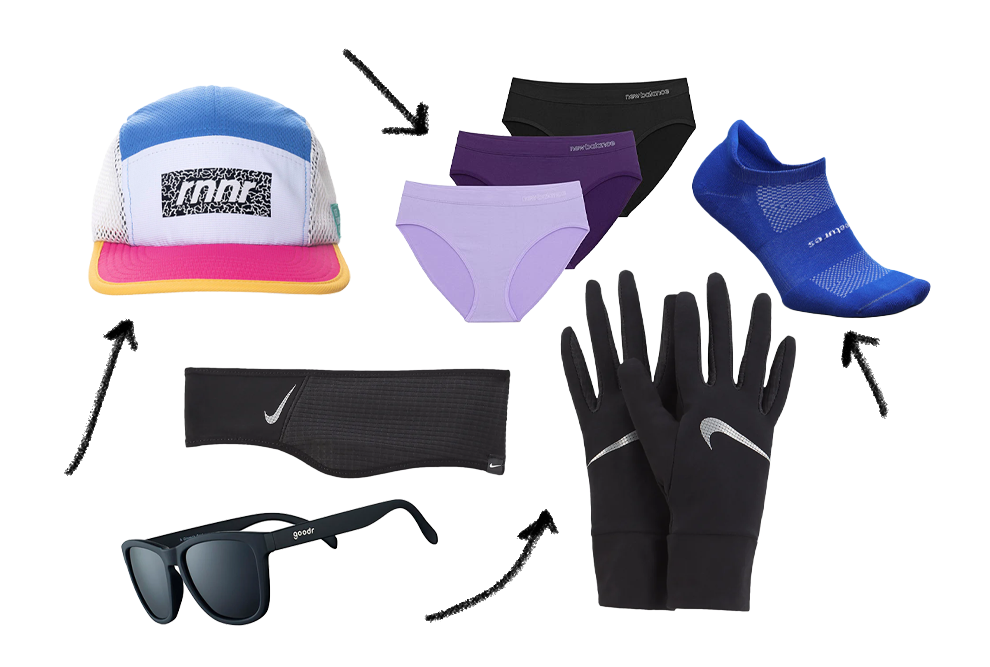
In addition to the right workout clothes, there are many other little things that can make running more comfortable. Personally, I found a fleece headband better than a beanie in the colder months, because it kept my ears warm without overheating. In a similar vein, I preferred a light- to medium-weight glove, rather than a thicker glove that would get hot quickly and need removing. I am someone who runs (ha!) hot, though.
For months, I wore a normal baseball cap, until I bought a lightweight mesh hat in a fun pattern from RNNR and decided I’d never run in a heavy, sweaty hat again. The sunglasses from Goodr (every NYC runner I know uses this brand) somehow don’t move from your face, even on the hottest and sweatiest days. Plus, they only cost $25 and come in a bunch of colors. Actual sports underwear — no cotton or sweat-wicking fabrics — will make sweaty summer runs better, I assure you.
A running belt is great for shoving full of snacks, as well as holding your phone and some lip balm.
A portable speaker was a much-beloved item in our running group during training (shoutout to my 11-minute mile crew) and it became an absolute godsend on marathon day when I lost my running buddy around mile 9 and had to run the rest of the way mostly alone. Without Beyoncé getting me through Central Park, I may not have made it.
And good socks are a little bonus no matter the weather. The extra padding in the Feetures ankle socks was really noticeable on the long runs, and I rarely got blisters. And if I wanted to feel like a fancy athlete, the thin Lululemon crew socks helped me feel cool and speedy.

Running shoes
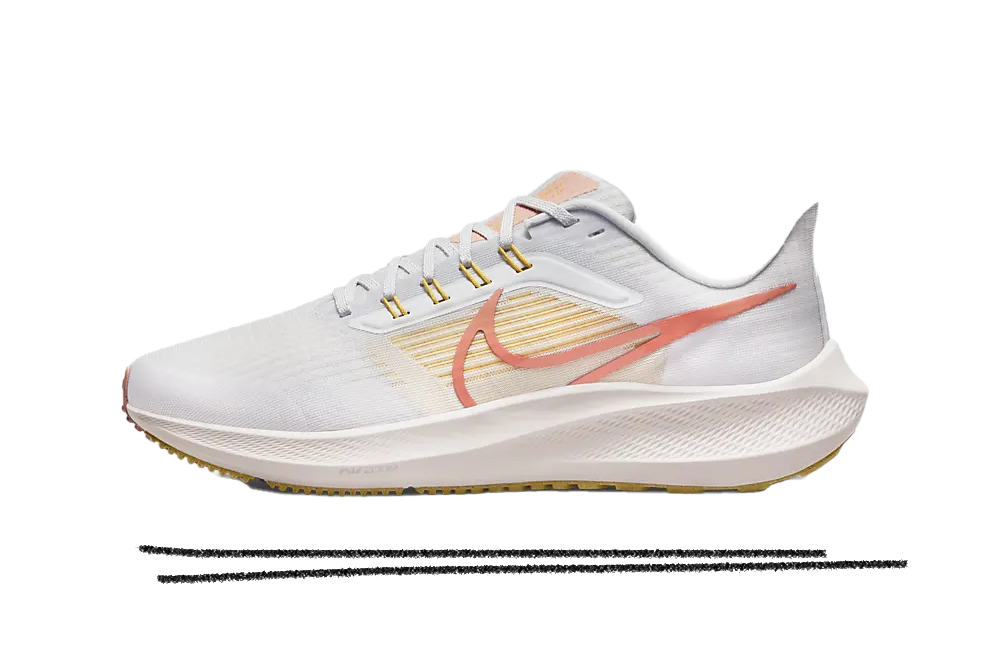
You are Cinderella looking for your perfect fit amongst seemingly millions of running shoes. One highly cited study found that runners who rotated their shoes among different models had a 39% lower risk of injury. So it’s worth having a few pairs, even if it means having a racing shoe and a comfy pair for long runs.
After getting fitted at a running store (highly recommend), I chose the classic Nike Pegasus 38 at the beginning of the year to train for a half-marathon. I’ve found them so comfortable that I’ve since bought three pairs — including a panic buy just two weeks before the marathon when I decided my pair had worn out too much in training. I had to hunt them down because Nike is now selling the 39 version. Running shoes usually last around 300–400 miles, so your weekly mileage will determine how many pairs you’ll need. For track sessions, I used a pair of the New Balance FuelCell SuperComp Pacer with carbon plating for speed — although I have found I am not a fast enough runner for a carbon plate to be noticeable. Maybe next year!
Another hot running tip: put your laces through the extra hole at the top of your shoe to keep them from slipping on long runs. I was too late to save my toenail, but maybe you won’t be.

Sunscreen, lip balm, and anti-chafing products
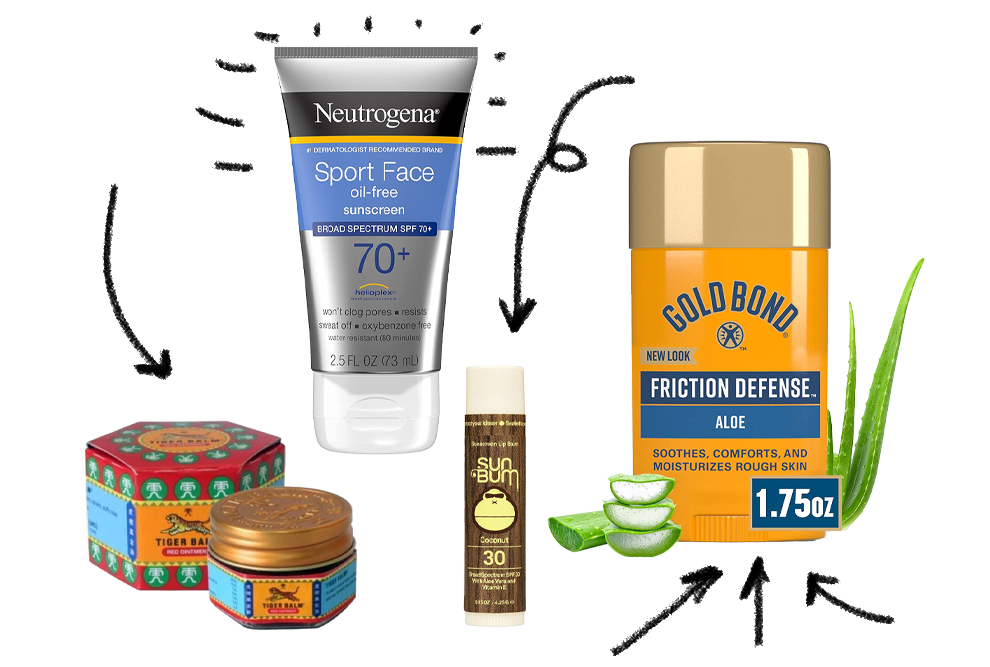
One of the things about marathon training is that you have to run all the bloody time, even if you’re traveling or the weather is unsuitable. I did a 16-mile training run in Puerto Vallarta, Mexico, where it was so humid we were sweating at 6 a.m., before the sun was even up, and I ran in 90-degree weather in Athens in August.
Regular sunscreen often doesn’t cut it when you’re sweating profusely, and I found that a sports-specific sunscreen meant I wouldn’t get melted sunscreen in my eyes. On longer runs, I would carry sunscreen with me, because I’d be out for more than two hours and would need to reapply. A lip balm with sunscreen is also easy to carry in a pocket, and if you forget face sunscreen to reapply, you can always use the balm on your nose as a last resort. Being out in the elements — sun, heat, wind, rain — makes the lips really sensitive, so take extra care of them.
Sweat and rain also make chafing more of an issue, so I’d slather a stick of Gold Bond around my thighs, waist, bra, and anywhere that clothes or the body would touch before heading out. Sometimes the most random, unexpected spots would chafe, so it was always worth carrying a stick in my bag. And when those aching muscles get home, some Tiger Balm helped them to relax (just make sure you don’t put it on directly before or after a bath).

Water bottles and hydration packs
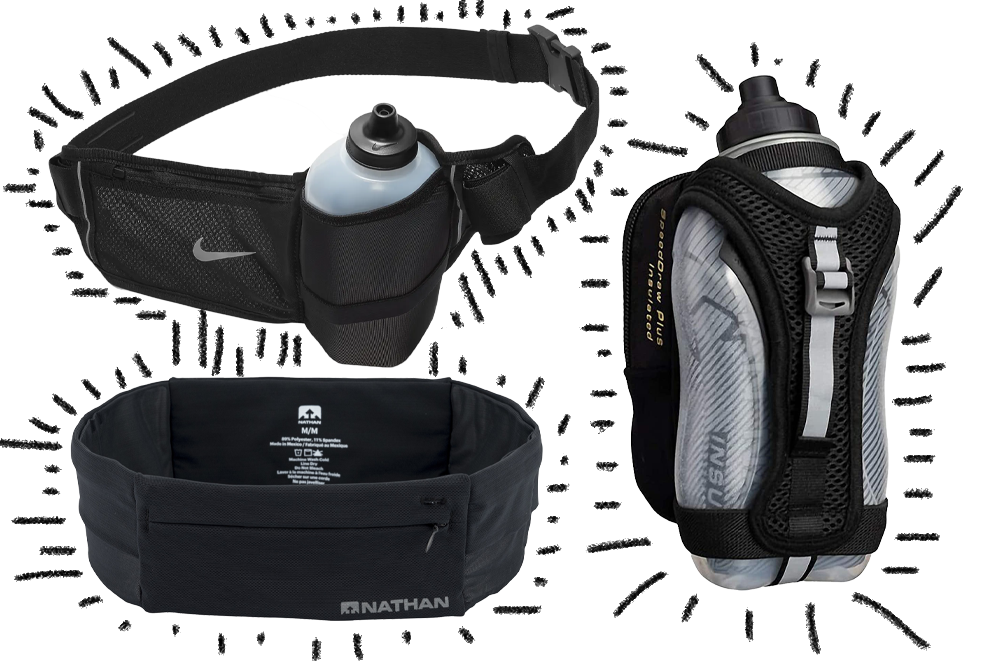
Hydration, hydration, hydration. Training during the summer means that carrying extra water for long runs is critical, and I refilled my water bottles multiple times during those runs. Most people I know who have run multiple marathons use a hydration pack, and I might upgrade to one next year.
Instead, I used a waist belt with two bottles from Nike, mostly because it was $30 (hydration packs are more often in the $100 price range). But I did have to put the belt high around my waist in order to keep the bottles from bouncing around too much, and this restricted clothing options in the summer: nothing cropped or a plain bra, as a belt on bare skin is a recipe for chafing.
The bottles didn’t spill, despite not having a cap, and were very easy to drink out of while running.
Two days before the marathon, panicking about the projected heat wave, I purchased a hand-held running bottle at the marathon convention. I thought it’d be annoying to run with a bottle in my hand, but it was better than the water around the waist (although it carried less). I didn’t start the race with the bottle, but I made sure it was with my support crew at mile 9 and it became crucial: The actual marathon hydration stations ran out of cups, and instead volunteers were pouring water directly into runners’ mouths if they didn’t have a water bottle. With record-breaking humidity, I shudder to think what would have happened if I hadn’t carried a water bottle that day. My running buddy finished her race still holding a crushed Poland Spring bottle she’d planned to throw out at mile 3.

Energy gels and chews
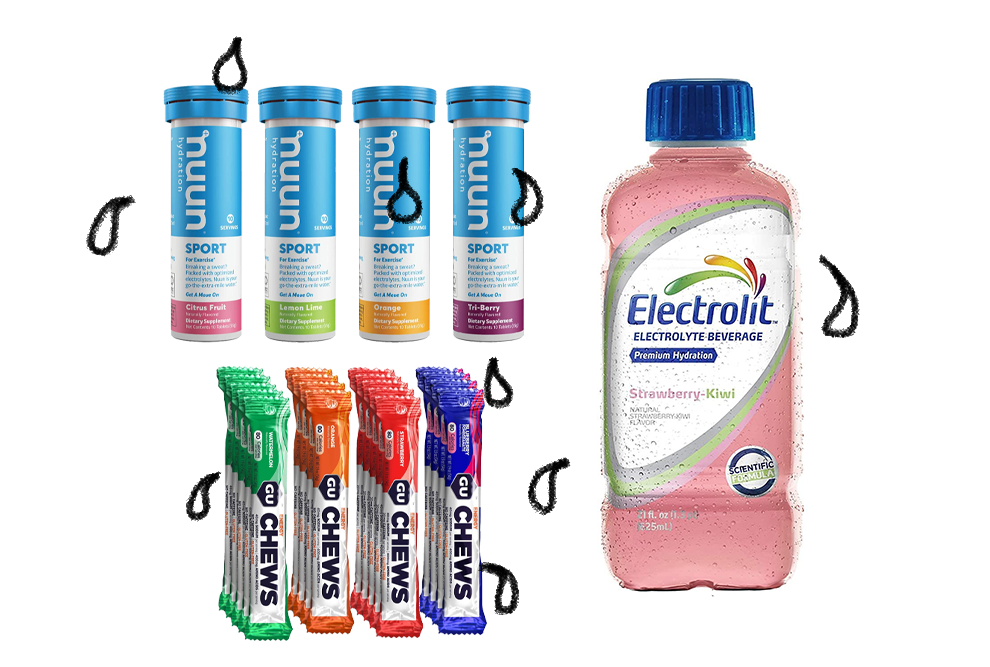
It was a surprise for me to learn just how much runners need to eat while running, particularly when going longer distances. Gels (or chews) are a deeply weird but important aspect of running nutrition, packed with a bunch of calories, caffeine, sugar, and carbs. Information abounds, but it’s usually recommended to eat a gel every 40–45 minutes (I did every 40 minutes). There are dozens of different brands, textures, and flavors, and everyone is finicky about their preferred ones.
Most people I know love Maurten gels, a top-of-the-line brand I didn’t purchase simply because I did not want to spend more than $3.50 per gel. I’ve long used GU Energy gel, which is one of the most well-known and cheapest brands, and I like the fruity flavors, especially salted watermelon, mandarin orange, and jet blackberry.
Their big mix boxes are a good way to see which ones you like and how you handle the caffeine. After about five GU gels on marathon day, I felt like I only had sugar in my body, and my stomach was furious. Next time, I may try some other brands, although by the end of the race every runner I knew never wanted to see a gel or energy drink again in their life.
Hydration starts before race day, so in the days before a long summer run, I’d be sipping on juices, coconut water, and electrolyte drinks. I love the Nuun electrolyte tablets as something to take before or after a run. On one hot summer training day, I started feeling really awful — no energy, nauseous, and achy. My friend told me I needed salt (?!) and gave me some salt tablets that she carried. The difference was noticeable and I soon started carrying them myself, particularly on hot days when I knew I’d be sweating out all my electrolytes. The tablets are easy to carry in a small ziplock bag in a running belt.

Fitness trackers and apps
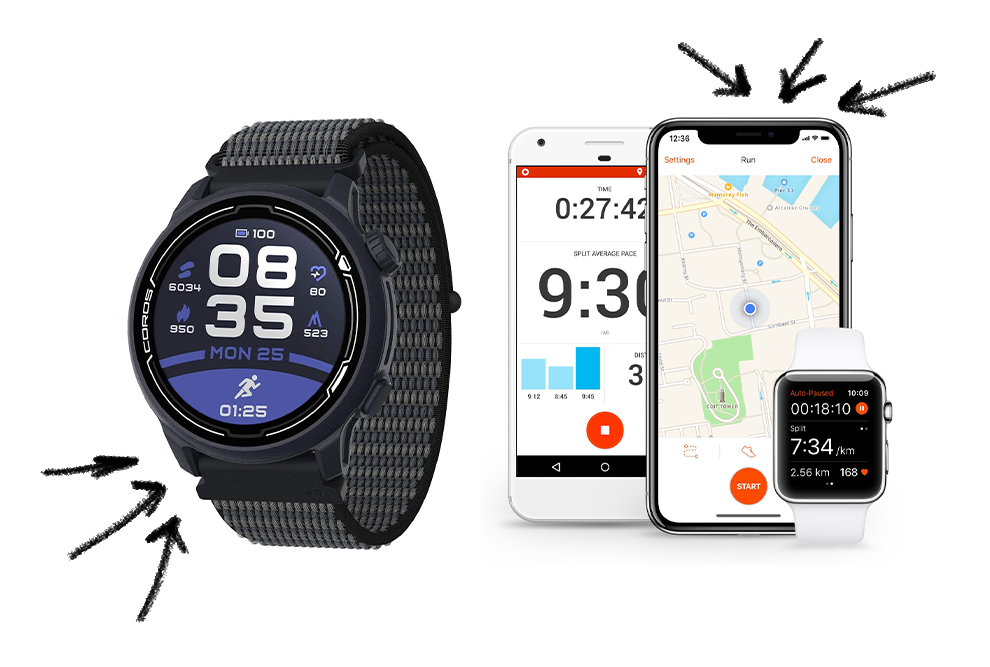
I haven’t worn a watch regularly since high school and, for a really long time, had zero interest in buying one for running. Well, I was wrong to put it off, because a sports watch gives you so much interesting information about your running progress, heart rate, and health that they are really worth it.
I was about to buy a Garmin, but my run club buddies all suggested the Coros Pace 2 because of its great battery life. (Further reason why a run club is great: You can rely on people with a lot more experience.) It also works for swimming, cycling, weights, and other sports.
Our marathon training coach would regularly warn us about being too watch-obsessed and to run according to effort and not time. Absolutely true! But as someone who is far more inclined to shuffle along at a near-walking pace if no one is pacing me, I actually found the watch helpful to let me know both when I’d slowed waaay down and also to count the miles.
I also set my watch to alert me to eat every 40 minutes. I would have entirely forgotten to eat from mile 12 to 26 in the marathon without it, since it felt like I’d just eaten a few minutes prior.
I loved checking Coros’s great app after I ran to see the numbers as proof that I was improving. I set my Coros watch to immediately post to Strava, the social media app for runners. Yes, the app can be a bit braggy, but following other people was encouraging. (And it’s great for figuring out who in your run club are secretly dating.)

Post-run massage tools, foam rollers, and more

Every Saturday after my long run I would come home and absolutely crash for the rest of the day. But there were several recovery routines that helped dramatically. One was an Epsom salt bath for tired muscles.
I also used a foam roller (I actually hated using this, but I suspect it helped) and massage balls to stretch. Regular acupuncture was crucial — insurance often covers it, and the best run I had all season was the morning after an acupuncture session. I also suspect it’s the reason I survived 16 weeks of training with zero injuries.
As a low-cost alternative, I also loved my acupuncture mat. A Hyperice massage gun was the only way to get at those aching glutes and hip muscles effectively. But my most prized possession was a pair of Normatec 3 Legs. The full-leg compression boots inflate and massage and they are very, very comforting on aching legs. Normatec sent me these to review, and thank god they did because they are expensive, but what is the price for comfort when your whole body hurts? (About $799, actually.) In my final weeks of marathon training, I spent several hours a day wearing these, so if work out the cost per wear, it really drops down. Several of my running friends have turned up at my house specifically to use these — one friend came over for dinner and lay on my couch with them on for an hour to relax after a busy day at work.
And the very best and most crucial thing for running recovery? Sleep! It is, unfortunately, priceless. ●


